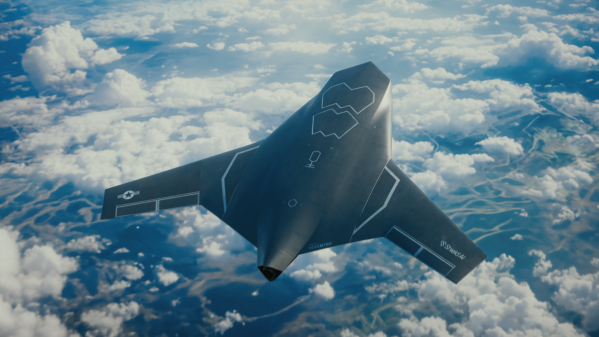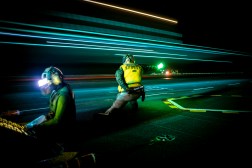Navy provides new details about sixth-gen F/A-XX fighter jet

NATIONAL HARBOR, Md. — The Navy’s next-generation fighter jet will have significantly longer reach than the plane it will replace in the carrier air wing, according to a senior officer.
The service is expected to award the F/A-XX program to either Boeing or Northrop Grumman in the not-too-distant future.
The Navy plans to begin fielding the system in the 2030s, and the platform is intended to eventually replace the F/A-18EF Super Hornet in the fleet.
Rear Adm. Michael “Buzz” Donnelly, director of the air warfare division, N98, in the Office of the Chief of Naval Operations, told DefenseScoop Monday that the sixth-gen F/A-XX will have several attributes that make it more advanced than the fourth-gen Super Hornet or the fifth-gen F-35C Lightning II.
Increased range will be a “core attribute” of the future fighter, he said.
“That increased range is an essential attribute that we’re looking to field. So probably over 125 percent of the range that we’re seeing today to give us better flexibility, operational reach. It will, of course, have refuel ability. And all of our air wings, our tactics and what we are designing in the future considers organic refueling capability. So the F/A-XX will be able to leverage that,” he said.
For context, the Super Hornet has a combat range of 1,275 nautical miles “clean” while carrying two AIM-9 missiles, according to a fact sheet from Naval Air Systems Command.
“It will definitely have longer inherent range. And then with refueling, you could say that’s indefinite as long as the refueling is available,” Donnelly said.
Stealthiness and AI integration will also be key characteristics, he suggested.
“Its attributes of survivability and signature, which give it the ability to penetrate threat airspace that will pace the threat that we see into the future beyond 2040. So that’s what we see as essential as the threat builds out its capabilities and increases kinetic capabilities with its own fighters and weapons,” he said.
“It will also, with the integration of AI and other technical advantages, allow us to have increased battle space management. And it will be our next platform that, instead of being man in the loop, will truly be man on the loop and allow us to have fully integrated architecture with our unmanned systems that we’re going to be fielding with concepts like the CCAs — whether it’s those collaborative combat aircraft, the small increased mass, or also teaming with larger unmanned vehicles that we may foresee into the future,” he added.
Today’s fighter and refueling capabilities give carrier air wings an “area of effect” of over 8 million square miles, Donnelly said during a panel at the Sea-Air-Space conference. With the addition of the MQ-25 Stingray unmanned tanker and the F/A-XX, the area of effect is expected to increase to 11 million square miles.
“That area of effect is important because that’s also the area of uncertainty for the air wing that enhances the survivability of the strike crew, but it’s also the tactical reality combined with the attributes of those platforms that allow us to penetrate into complex, ubiquitous ISR that the threat will continue to field and be selective in our targeting, so that we can be efficient and persist longer,” he said.
Adm. James Kilby, acting chief of naval operations, declined to provide a timeline for when the F/A-XX award might be announced.
“I don’t want to get ahead of the contract decision,” Kilby told reporters on the sidelines of the Sea-Air-Space conference. “It’s a decision at the secretarial level and above, and they’re working that now.”
He added: “But I will tell you, we need F/A-XX in the United States Navy, just like the Air Force does [need a next-gen fighter]. I mean, we’re talking about a fight in the Pacific. We fight together as a joint force, so having that capability is very important for us.”
Brandi Vincent contributed reporting.






